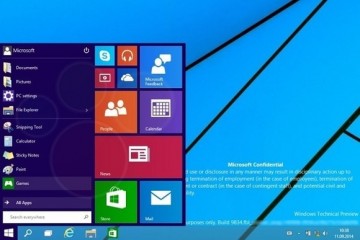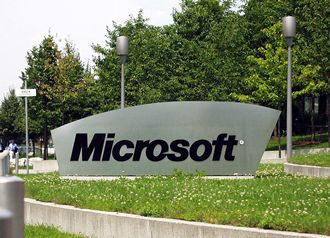 Microsoft normally follows a pattern with its operating systems – one successful version is followed by a total stuff up.
Microsoft normally follows a pattern with its operating systems – one successful version is followed by a total stuff up.
Theoretically that should means that Windows 9 should be great, but leaked screen shots of the coming attraction shows that Microsoft could be headed for yet another disaster.
The update, codenamed Threshold and possibly called Windows 9 or just plain Windows, takes some features from Windows 8 and grafts them onto the classic Windows 7 desktop. This is a sop to most Windows users, like me, who hated having to dumb down their computers by running tablet software as the interface.
When running in windowed mode, Windows Store apps will get a button in the top-left corner. Clicking the button brings up a list of functions that previously appeared in the Charms bar, including Search, Share, Play, Project and Settings. This menu will let users switch the app to full screen mode as well.
There will be some new buttons to the desktop taskbar — a search button sits immediately to the right of the Start button, followed by a button for switching between multiple desktops. The latter feature, possibly called “virtual desktops,” will let users switch between several sets of desktop apps and layouts.
On the right side of the taskbar, users will find a new notifications button, with a pop-up menu that will presumably show messages from Windows Store apps.
The screenshots show that Microsoft is keeping the Charms bar, which many expected would be culled.
While all of this is subject to change as Microsoft has not even released a public beta yet, but it is clear that Windows 9 is not really going to be much different from Windows 8.
This is a major problem, particularly as Windows 7 will be starting to look a little elderly by the time Windows 9 hits the shops. Part of the problem is that Microsoft refuses to understand that people do not want their PCs running like a tablet. When you are sitting at a PC you are there for serious work and serious programs, you do not want to have to jump between screens looking for software you do not want.
How often PC users will want to visit the app store is anyone’s guess, yet Microsoft appears to be trying its hardest to make this easier.
What is annoying is that the software behind the interface is much better and more reliable than Windows 7, but the software is crippled by its interface.
This will create huge problems for Microsoft. When it put out Windows Vista people just stayed using Windows XP. Now, rather than use Windows 8, users are sticking to Windows 7. If Windows 9 is just Windows 8 in drag then people are going to want to stay with Windows 7 even longer. That is going to make it even more venerable and established that XP was.
Microsoft needs to get back to design basics and work out why people use a desktop. Hint: it is not because they want a more powerful tablet.
 People eager to throw off the shackles of Windows 8.x look like they’ll have some time to wait before they’re free at last.
People eager to throw off the shackles of Windows 8.x look like they’ll have some time to wait before they’re free at last.








